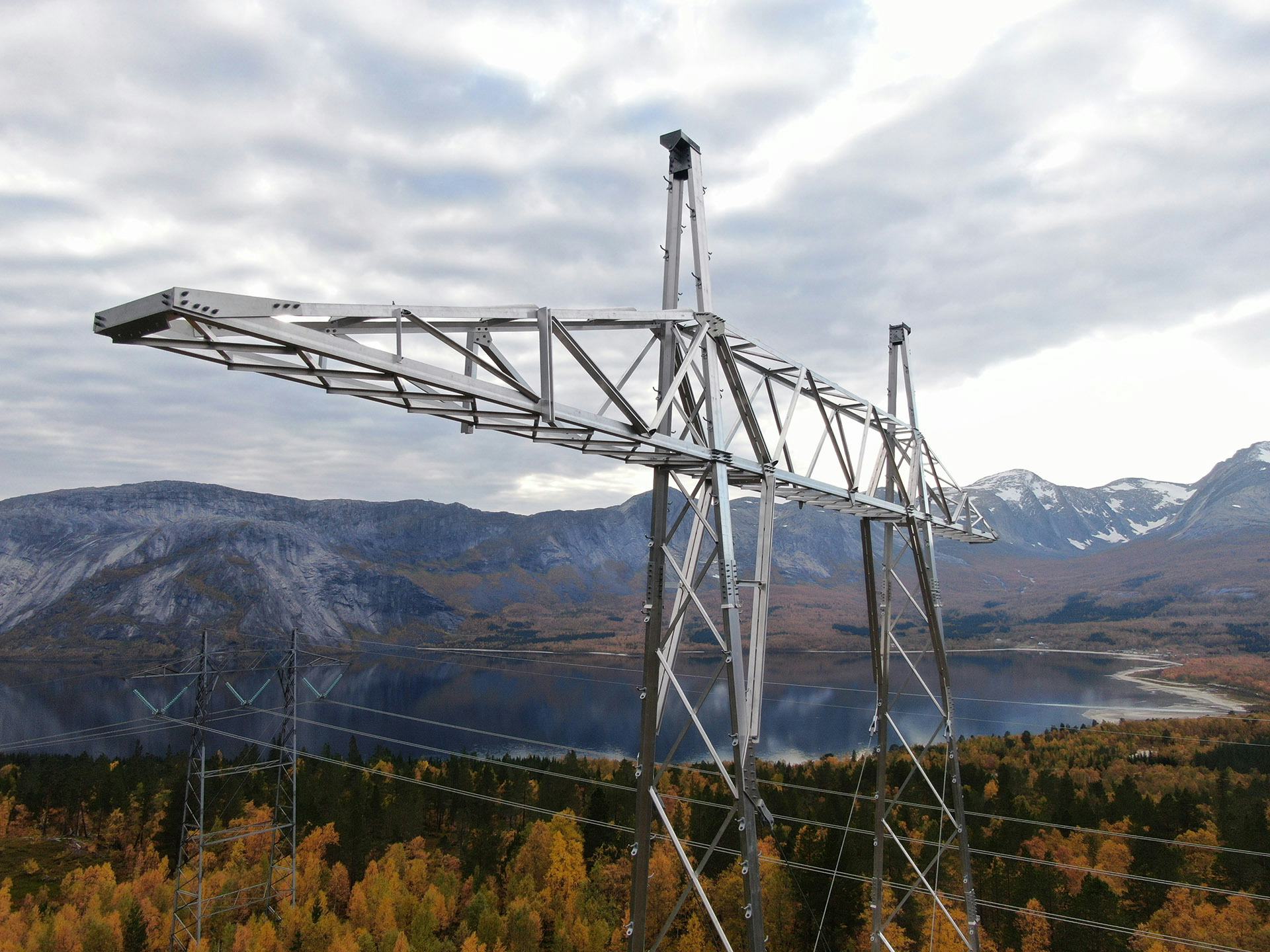Statnett powerlines (Norway) are generally constructed in extremely difficult, mountainous terrain exposed to high wind and ice loads. The lack of accessibility to most tower locations requires all equipment, materials and personnel to be flown to the construction site. Reducing the flying time or number of trips has a huge impact on the environment and cost. These constraints and impacts triggered a R&D project, with EFLA's participation, aimed at developing a new tower made completely of aluminium for the 420kV transmission network.
EFLA has been involved in the R&D project since its inception in 2015 and has been instrumental in the design of the tower in partnership with Statnett and diverse industry partners.
The goals of the project are
1. Increase safety by reducing the time workers spent on the towers during construction
2. Lower the weight of the towers thereby reducing the helicopter trips
3. Reduce the erection time and costs
4. Reduce the CO2 emissions associated with the overall lifecycle of a powerline
Prototype design
A prototype tower was designed, constructed and tested mechanically and for vibration to provide an assessment of the dynamics and self-damping properties of such lightweight structures/elements. Wind tunnel tests of selected profiles were also conducted to assess their susceptibility to vortex-induced vibrations which could result in fatigue failure. The mechanical and vibration tests were successful with the tower reaching 130% of the design resistance under the critical load case.
.jpg&w=2048&q=80)
LCA Analysis
The environmental division of EFLA conducted a Life Cycle Analysis of the carbon footprint of aluminium towers compared to the standard steel towers. The study concluded that over the life cycle of a transmission line (mining for ore and producing the raw materials, design, production, transportation, construction, maintenance, dismantling and recycling), the use of aluminium towers results in a reduction of CO2 emissions by a factor of 2.
Second phase
After the success of this first phase and mechanical testing of the tower, Statnett commenced the second phase in 2018 to develop a pilot tower that was constructed close to the new Kobbvatnet substation in Nordland at the start of summer 2019. Statnett received positive feedback from the construction crews regarding erection of the tower. The structure and its elements show no signs of possible negative behaviour after standing in the field for 4 seasons.
Powerful partners
EFLA is currently collaborating with Norsk Hydro and Statnett on new solutions for the leg elements for all different tower heights, as well as a few other improvements deemed to be more effective for aluminium structures. The powerful and international team at EFLA, Statnett and Norsk Hydro is hopeful that the development of these towers will go to its term and that aluminium towers will become a reality in transmission lines in Norway.
EFLA would like to thank Statnett for recognizing and trusting EFLA's capabilities to undertake such a unique and challenging design. Statnett through its research projects, is clearly leading the way in line design, construction and the reduction of its environmental footprint by challenging the conventional processes of working.
